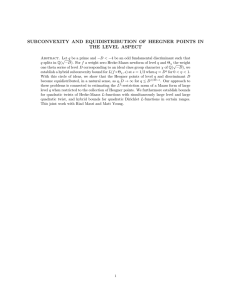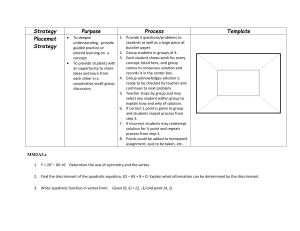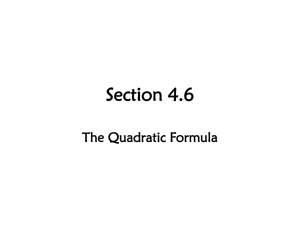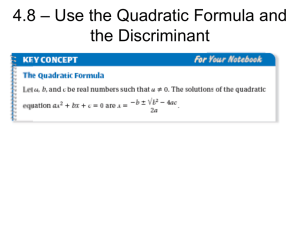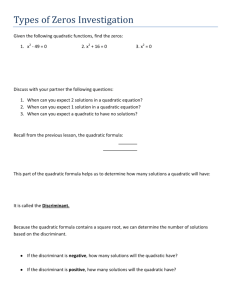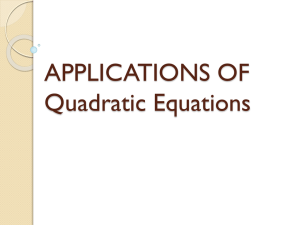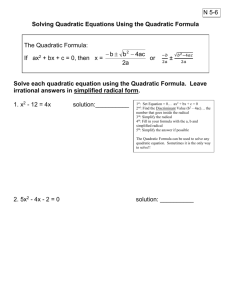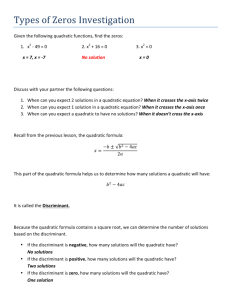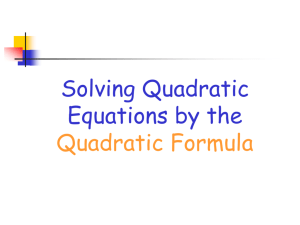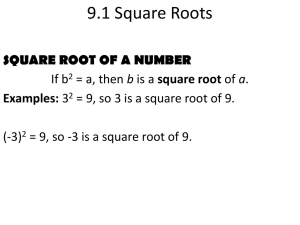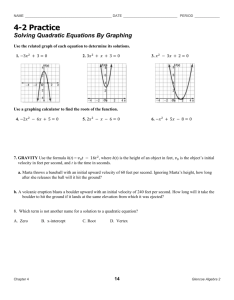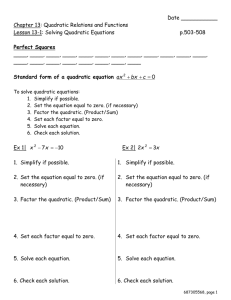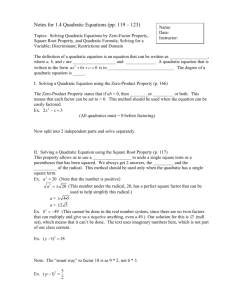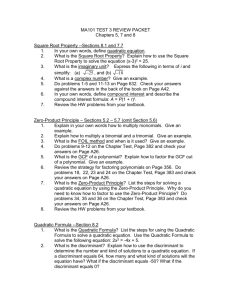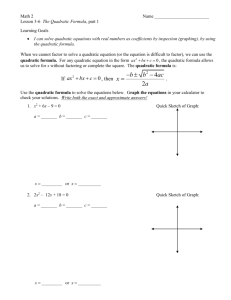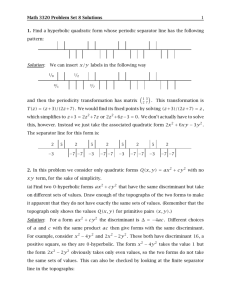4.8 Notes Blank
advertisement
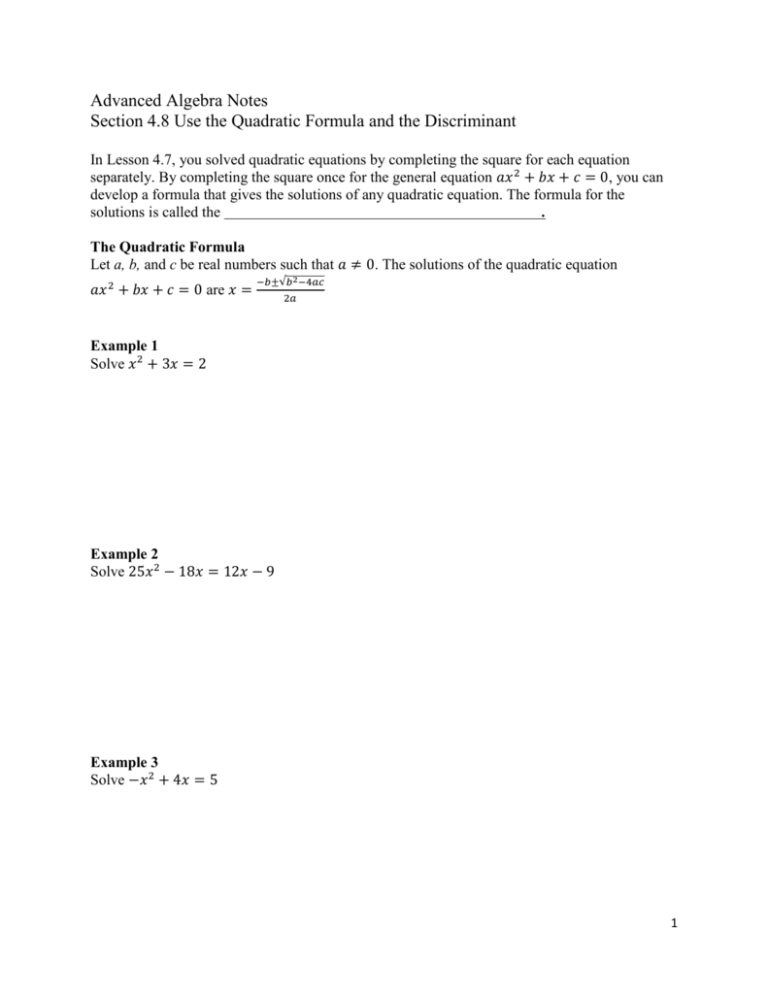
Advanced Algebra Notes Section 4.8 Use the Quadratic Formula and the Discriminant In Lesson 4.7, you solved quadratic equations by completing the square for each equation separately. By completing the square once for the general equation 𝑎𝑥 2 + 𝑏𝑥 + 𝑐 = 0, you can develop a formula that gives the solutions of any quadratic equation. The formula for the solutions is called the . The Quadratic Formula Let a, b, and c be real numbers such that 𝑎 ≠ 0. The solutions of the quadratic equation 𝑎𝑥 2 + 𝑏𝑥 + 𝑐 = 0 are 𝑥 = −𝑏±√𝑏2 −4𝑎𝑐 2𝑎 Example 1 Solve 𝑥 2 + 3𝑥 = 2 Example 2 Solve 25𝑥 2 − 18𝑥 = 12𝑥 − 9 Example 3 Solve −𝑥 2 + 4𝑥 = 5 1 Discriminant In the quadratic formula, the expression 𝑏 2 − 4𝑎𝑐 is called the of the associated equation 𝑎𝑥 2 + 𝑏𝑥 + 𝑐 = 0. You can use the discriminant of a quadratic equation to determine the equation’s number and type of solutions. Using the Discriminant of 𝒂𝒙𝟐 + 𝒃𝒙 + 𝒄 = 𝟎 Value of Discriminant 𝑏 2 − 4𝑎𝑐 > 0 Number and Type of Solutions Graph of 𝒚 = 𝒂𝒙𝟐 + 𝒃𝒙 + 𝒄 𝑏 2 − 4𝑎𝑐 = 0 𝑏 2 − 4𝑎𝑐 < 0 Modeling Launched Objects In Lesson 4.5, the function ℎ = −16𝑡 2 + ℎ0 was used to model the height of a dropped object. For an object that is launched or thrown, an extra term 𝑣0 𝑡 must be added to the model to account for the object’s initial vertical velocity 𝑣0 (in feet per second). Recall that h is the height (in feet), t is the time in motion (in seconds), and ℎ0 is the initial height (in feet). ℎ = −16𝑡 2 + ℎ0 ℎ = −16𝑡 2 + 𝑣0 𝑡 + ℎ0 Object is dropped Object is launched or thrown Example 4 A juggler tosses a ball into the air. The ball leaves the jugglers hand 4 feet above the ground and has an initial vertical velocity of 40 feet per second. The juggler catches the ball when it falls back to a height of 3 feet. How long is the ball in the air? Closing: How do you use the quadratic formula and the discriminant? HOMEWORK: 2
